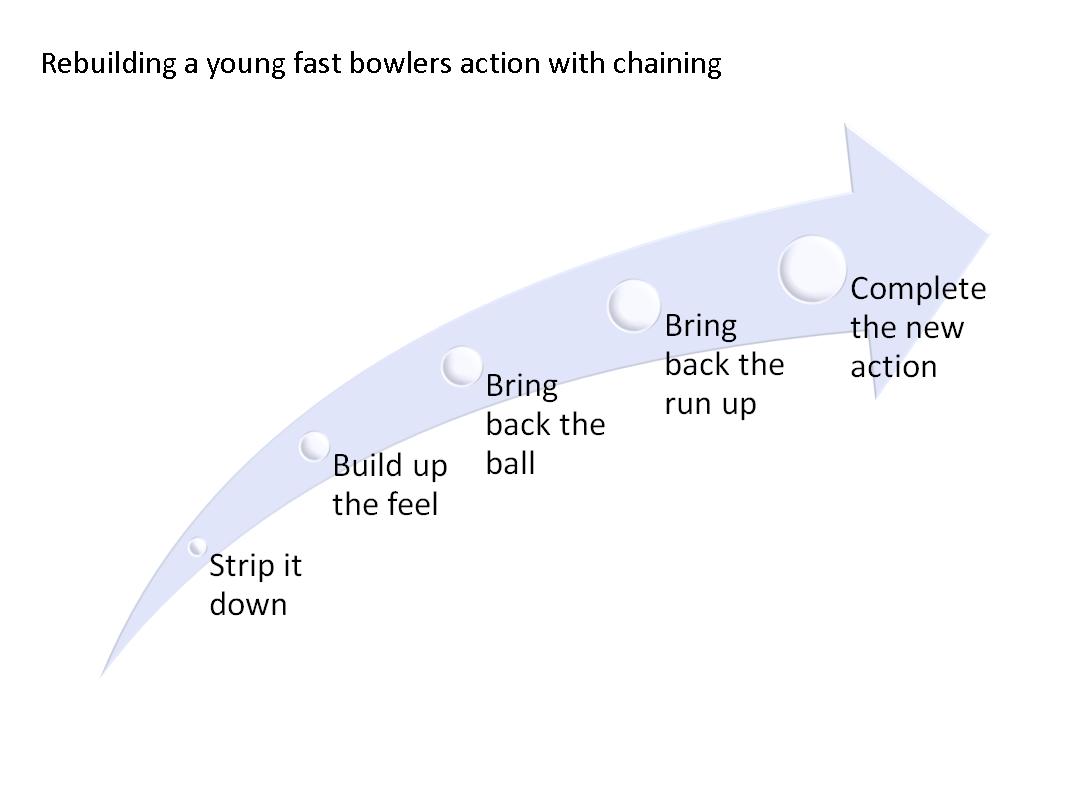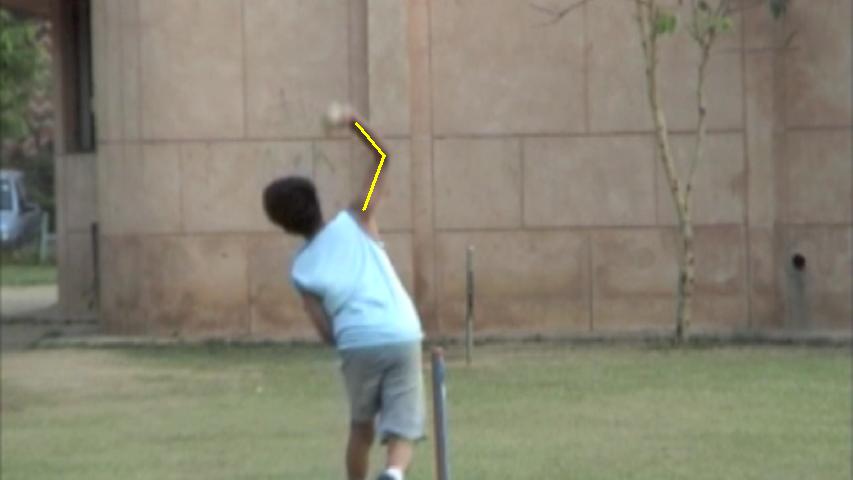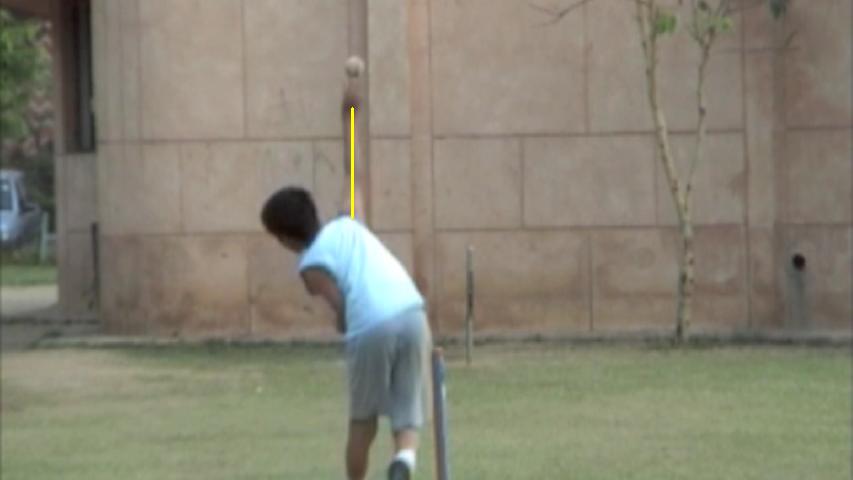|
 Nobody tries to throw the ball when they are bowling. Nobody tries to throw the ball when they are bowling.
Yet for some, especially young bowlers who are trying to bowl fast, that is exactly what happens. Unlike most technical errors, throwing is illegal under the Laws of cricket and has an unfair stigma attached to it that can ruin a players bowling career. If you come across such a problem it needs to be nipped in the bud as soon as possible.
What is chucking?
As with many cricket skills, bowling with a straight arm is an unnatural act as any coach who has tried to teach it to young players can testify. It's much easier to throw the ball by bending and straightening at the elbow. However, the Laws are clear. For a ball to be legal, Law 24.3 says: "the elbow is not straightened partially or completely".
Thanks to computer analysis we now know that all bowlers have a slight straightening (which is now legal in professional cricket up to 15 degrees), but it is when it is clear to the naked eye that problems occur. A young player can get called for throwing and face being banned from bowling.
An example of straightening the elbow
To clarify the point, lets take an example of a young player who has been accused of unfairly throwing. Here is are two stills from the same delivery, taken a frame apart:


As I have highlighted, there is a clear bend in the arm in the first picture and a straight arm in the 2nd picture. This is quite hard to detect at full speed. Without access to a biomechanics lab it would be hard to say if the ball is a chuck or not (remember there is some leeway allowed). Assuming he has only contacted me because he is getting no balled let's say there is an issue.
I suspect this has come about has he tried to up his pace before his growing body is read for the extra demand.
Is there a problem?
Before we roll up our sleeves and start the process of correction, we need to ask if there is a problem at all.
The famous example is Sri Lankan spinner Mularitharan. His hyper flexible shoulders and wrists combined with a bent arm certainly looks like chucking to the naked eye and the bowler was no balled for it in top level cricket. He has undergone extensive computer model testing and despite what the eye thinks, his arm straightens well within the legal limit.
The only way to tell at lower levels is to rely on the judgement of the umpires. If a player is getting no balled his progress will stall and remedial work is needed. It may be he or she is not chucking in the modern definition, but if it looks like it that is enough.
The answer: Kinaesthetic chaining
So how does a coach correct a technical error like this?
It's much easier for young players to correct as they have not ingrained the habit on their muscle memory. However, whatever the age of the player, it is up to a good coach to take the action back to the root of the problem and build it back up again. I call this kinaesthetic chaining. What that translates as is this: Breaking the action down and rebuilding it by getting the feel right. Here is how you do it:
- Strip it down. Start by taking everything away from the bowler except the action itself: Batsman, net, ball, run up and stumps. The bowler should bowl from a standing position, starting at the point of back foot impact.
- Build up the feel. Take time to go through the right feel from a standing start without the ball. Make sure the bowler can deliver with a straight arm and maintain all the components of a strong action: loading up, head position, foot position, hip position, shoulder rotation. The coach is not trying to alter the action too much here, the focus is on getting the feel for a straight arm again. When the arm is straight from a stationary position you can start to walk through the action, then jog through from a few paces; still without the ball.
- Bring back the ball. When the arm is straight without the ball it's time to bring the ball back in. Initially it's more important to get the feel for releasing the ball again rather than worry about line and length. Start as before with a standing position and move to walking through. When the release is sound you can start to jog through the action with the ball from a few paces.
- Bring back the run up. Finally you can bring back the bowler to their full run up and release. Now is the time to focus on accuracy. With a player wanting to generate more pace the coach could work on driving the hip and chest through more to prevent a chucking relapse.
- Complete the new action. The new action is now complete and the bowler can return to nets or matches. At any stage the coach may drop back to the previous drill if there are signs of a relapse.
This process can take some time. While the bowler is rebuilding the action it's vital they do not try and bowl at all in practice or games; doing that will only get the player back into previous habits.
If you or one of your players is accused of chucking, the correction process should be a last resort. Although difficult, it is possible for a coach to remove the rhythm of a bowlers' action. However, if the problem threatens future success you may have no choice.
What are your experiences of chucking? Leave a comment whether you are a coach or a player.

Want to learn more technical infomation about coaching fast bowlers? Click here to view Ian Pont's fast bowling course on PitchVision Academy.
Discuss this article with other subscribers
|









